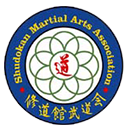Kata Geiko and Seishin Tanren
By Davey, H. E.This article first appeared in the "SMAA Journal" Volume 25, Issue 3.
Are you a new martial artist?
Want to learn the meaning of kata geiko and seishin tanren?
Kata is one of the most common words that you’ll hear in association with both the ancient martial arts (koryu bujutsu) and their modern offshoots (gendai budo or shin budo). Kata means “form,” as in the formal practice of prearranged techniques. It is universally used in traditional Japanese martial arts as a key method of training the mind and body.
Many martial arts enthusiasts have heard the term kata used in karate-do, where kata are often a series of predetermined solo techniques directed toward imagined opponents. While individual kata practice exists in Japan, aside from arts like karate-do, iaido, and kyudo, it is less common. In judo, jujutsu, aikido, kendo, koryu bujutsu, and more, kata training typically involves two people. The opponent is actual, not imagined, which allows participants to learn to control distance and timing.
In some martial arts systems, students start by practicing handed down sequences of paired techniques, which are designed to internalize a principle (or principles). Once these principles are absorbed, advanced practitioners create personal variations, such as applying a throw or immobilization against a different attack than is found in the classical kata. Eventually, students practice randori, in which they defend against any unexpected attack and intuitively create techniques in the moment (based on principles internalized through kata training). Kata-based practice is a time-honored, intelligent, and progressive way of building up skill in a martial art. The kata are taught in a specific sequence, allowing students to gradually and scientifically develop their abilities in a way that’s easily understood. And the ultimate purpose of kata geiko is seishin tanren, or “to forge the spirit.” If you’re just getting started in Japanese martial arts, you might wonder why that’s important.
Traditional Japanese martial arts, as opposed to some martial sports, are concerned with living and dying, in that the samurai had to face the reality of death more than most people. In this respect, martial arts that evolved from samurai practices are similar to religion, which also deals with death.
Without this capacity for calmness under pressure, no martial arts technique will work in real combat. The martial artist will simply freeze.
But not every martial arts school recognizes this. Students may practice meditation and exercises to aid in controlling the mind, because without mental control, kata geiko is rarely effective. This isn’t something that can be fully resolved with hard, aggressive classes, because regardless of the severity of the practice, it can’t truly recreate the chaotic stress of combat. A different approach is needed for practical martial arts, and this approach can also tremendously help us in our lives.
Join an authentic Japanese martial arts organization
The Shudokan Martial Arts Association promotes training based around the two central pillars of classical Japanese martial arts: kata geiko and seishin tanren. The use of handed-down kata helps our members, regardless of division, to forge their spirits to face the stress of combat and the uncertainties of life. In this way, folks in the SMAA learn to protect themselves, and live well, while they develop the spiritual strength needed to make a positive contribution to their communities and the world as a whole.
Contact us today to join a martial arts organization with high-ranking members around the world!

